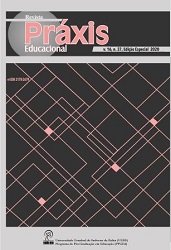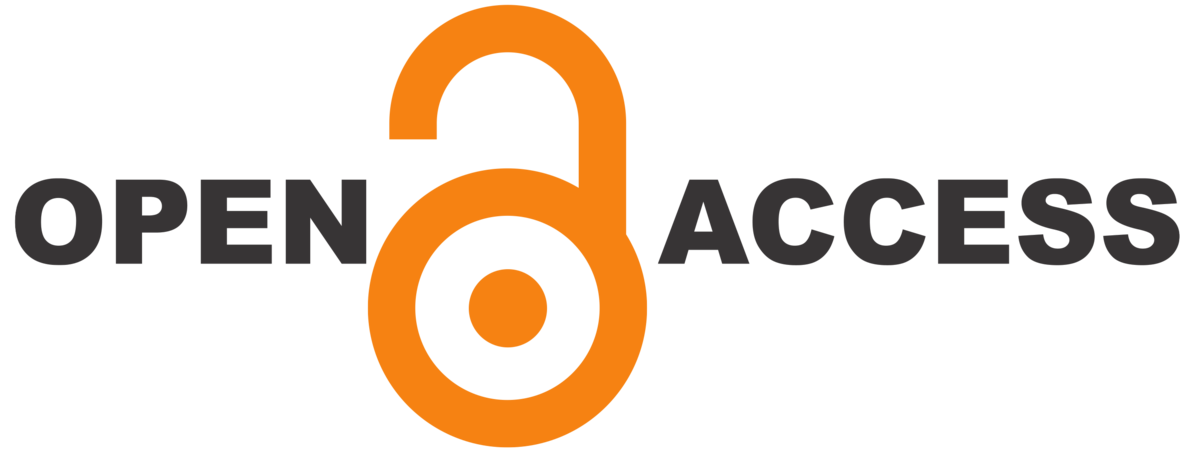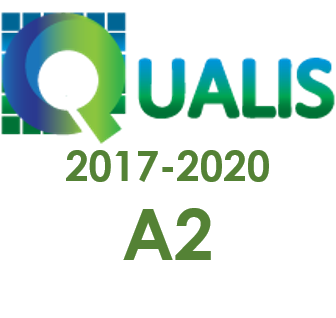DETERMINATION OF SOCIAL NETWORKS IN THE CONTEXT OF SOCIAL CHANGE, TECHNOLOGY AND EDUCATION ACCORDING TO THE OPINIONS OF SCHOOL ADMINISTRATORS
DOI:
https://doi.org/10.22481/praxisedu.v16i37.6164Palavras-chave:
Rede social, Tecnologia, Mudança social, AdministradoresResumo
Esta pesquisa foi realizada de acordo com o formulário de entrevista semiestruturada desenvolvido pelos diretores da escola e pesquisadores que trabalham nos distritos de Nicósia e Kyrenia no ano letivo de 2018/19. No âmbito da pesquisa, a dimensão da mudança social e o efeito da tecnologia nesse processo foram discutidos. A relação entre mudança social e tecnologia foi discutida no contexto da educação e, em seguida, foram expressas as situações que foram realizadas pela interação de três conceitos. Além disso, enfatizou-se que desenvolvimentos positivos podem ser experimentados se beneficiando do potencial das redes sociais no triângulo das mudanças sociais, tecnologia e educação, e que o mesmo potencial pode ser prejudicial se alguns casos forem ignorados.
Downloads
Referências
Badri, M., Nuaimi, A., A., Guang, Y. and Rashedi, A., A. (2017). School perfomance, social networking effects, and learning of school children: Evidence of reciprocal relationships in Abu Dhabi, 1-12.
Balci, B. (2010). Success factors in the e-learning system. In U. Demiray, G. Yamamoto, M. Cut. (Eds.). E-learning in Turkey: Developments and applications (pp. 465-480).
Burnett, E., Lamm, A., Lucas, J., & Waters, R. (2009). Engaging stakeholders through social networking: how nonprofit organizations are using facebook. Public Relations Review, 35(2), 102-106.
Carr, N. (2006a). From transparency to trust. American School Board Journal, 193(9), 68-69.
Dabbagh, N. and Kitsantas, A. (2012). Personal learning environments, social media, and selfregulated learning: A natural for connecting formal and informal learning. The Internet and Higher Education, 15(1), 3-8. doi:10.1016/j.iheduc.2011.06.002formula.
Dağlı, G. ve Öznacar, B. (2015). Okul Yöneticilerinin, Öğretmenlerin ve Ailelerin Görüşlerine Göre İlköğretim Okullarının Yaygınlaştırma Uygulamalarına Bir Değerlendirme. Eğitim Bilimleri: Kuram ve Uygulama , 15 (5), 1317-1332.
Debeş, G., & Öznacar, B. (2018). Evaluation of the opinions of various actors on the school management of digitalization and management processes of the system engineering model in education. Amazonia Investiga, 7(16), 304-315.
Friedman, L.W., & Friedman, H.H. (2013). Using social media technologies to enhance online learning. Journal of Educators Online, 10(1), 1-22.
Gillet, D., El Helou, S., Yu, M. C., & Salzmann, C. (2008). Turning Web 2.0 social software into versatile collaborative learning solutions, 170-176). IEEE Computer Society Press.
Hall, D. (2006). Managing the communications. Learning & Leading With Technology, 33(6), 18-21.
Hampton, N., K. (2016). Social media and political discussion: when online presence silences offline conversation (Online). Retrieved from https://www.tandfonline.com/doi/full/10.1080/1369118X.2016.1218526
Herold, B. (2016, February 5). Technology in Education: An Overview. Education Week. Retrieved Month Day, Year from http://www.edweek.org/ew/issues/technology-in-education/
Hew, K., F. (2011). Students’ and teachers’ use of facebook, 662-676.
Hsieh, C.C., Yen, H.C. and Kuan, L.Y. (2014). The relationship among principals’ technology leadership, teaching innovation, and students’ academic optimism in elementary schools, International Conferences on Educational Technologies 2014 and Sustainability, Technology and Education, 113-120.
Huffman, S Education, 134(2), 154-160.. (2013). Benefits and pitfalls: Simple guidelines for the use of social networking tools in K-12 education.
Kaya, T. And Bicen, H. (2016). The effects of social media on students’ behaviors; Facebook as a case study, 374-379.
Köse, K., E., Yurdakul, Ö. ve Onuk, H. (2017). The Investigation of the relationship between school adninistrators leadership in technology and teachers’ students’ interaction in social media, 1-16.
Mason, R. (2006). ‘Learning technologies for adult continuing education’. Studies in Continuing Education, 121-133.
Mazman, G. S. and Usluel, K. Y. (2010). Modeling educational usage of Facebook, 444-453.
Mejias, U. (2005). Nomad's guide to learning and social software. Retrieved 19.05.2008, from. http://knowledgetree.flexiblelearning.net.au/edition07/download/la_mejias.pdf
Mitchell, S., Foulger, T. S., & Wetzel, K. (2009). Ten tips for involving families through internet-based communication. Young Children, 64(5), 46-49.
Öznacar, B., Dericioğlu, S. (2017). Teknoloji Kullanımında Okul Yöneticilerinin Rolü. Avrasya Matematik, Fen ve Teknoloji Eğitimi Dergisi , 13 (1), 253-268. https://doi.org/10.12973/eurasia.2017.00615a
Öznacar, B., Kan, Ş. G., Besim, S., & Şensoy, Ş. (2018). Assessment of the Effects of TV Programs Containing Violence on Children in Pre-school Period through the Views of Parents. BRAIN. Broad Research in Artificial Intelligence and Neuroscience, 9(4), 77-82.
Reuben, R. (2008). The use of social media in higher education for marketing and communications: A guide for professionals in higher education. Retrieved from http://doteduguru.com/wp-content/uploads/2008/08/social-media-in-higher education.pdf
Tiryakioğlu, F. and Erzurum, F. (2011). Use of Social Networks as an Education Tool, 135-150.
Downloads
Publicado
Como Citar
Edição
Seção
Licença
Você é livre para:
Compartilhar - copia e redistribui o material em qualquer meio ou formato; Adapte - remixe, transforme e construa a partir do material para qualquer propósito, mesmo comercialmente. Esta licença é aceitável para Obras Culturais Livres. O licenciante não pode revogar essas liberdades, desde que você siga os termos da licença.
Sob os seguintes termos:
Atribuição - você deve dar o crédito apropriado, fornecer um link para a licença e indicar se alguma alteração foi feita. Você pode fazer isso de qualquer maneira razoável, mas não de uma forma que sugira que você ou seu uso seja aprovado pelo licenciante.
Não há restrições adicionais - Você não pode aplicar termos legais ou medidas tecnológicas que restrinjam legalmente outros para fazer qualquer uso permitido pela licença.












